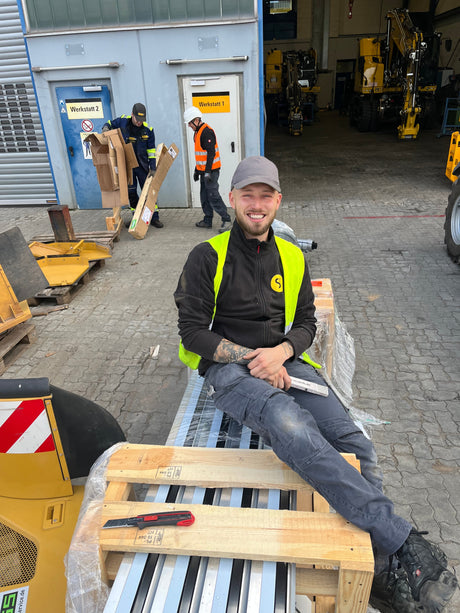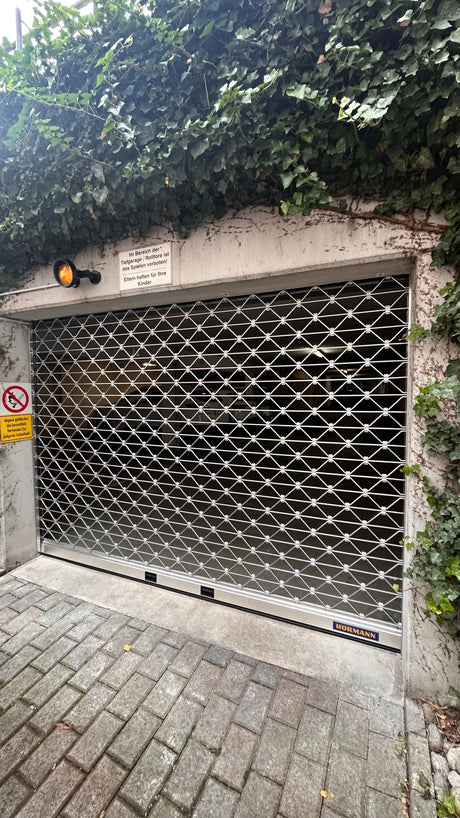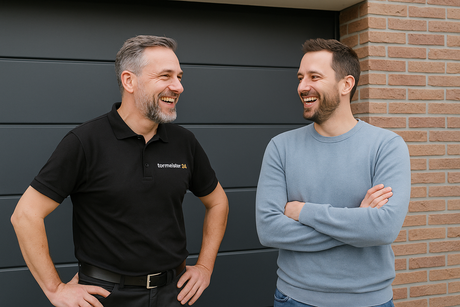Control systems for loading technology – safety & efficiency at the loading ramp
Control systems for loading technology are the central element of modern ramp and gate systems. They connect dock levelers, industrial gates, safety devices, and signaling technology into an integrated system. Without these controls, the safe and efficient handling of loading and unloading processes in logistics centers, freight forwarding companies, the food industry, or production halls would not be possible. In this specialist article with over 10,000 words, we explain the technology, possible applications, applicable standards, as well as the advantages and purchasing criteria for control systems in loading technology.
Why controls are crucial in loading technology
Loading technology is a highly sensitive area where safety and efficiency must go hand in hand. Several systems converge at a loading ramp: industrial doors, dock levelers, dock shelters, safety wedges, and traffic lights. To ensure that all these components work together in a coordinated manner , an intelligent control system is required. It performs tasks such as:
- Safety check: Gate only opens when a truck is correctly positioned.
- Sequence control: the dock leveller only extends when the gate is opened.
- Signaling: Traffic lights regulate communication between drivers and ramp personnel.
- Energy saving: Gate remains closed as long as no loading or unloading takes place.
Without these controls, the process would be unsafe, inefficient and error-prone.
Overview of control systems for loading technology
There are different types of controls that are combined depending on the area of application:
- Dock leveller controls: hydraulic or electromechanical systems that control the raising and lowering of the leveller.
- Gate controls: Control of sectional doors, roller doors or high-speed doors on the ramp.
- Combined systems: Control systems that combine gate + bridge + security in one unit.
- Signal controls: for traffic lights, illuminated displays or wheel locking systems.
Manufacturers such as Marantec, Hörmann, ITW, Rite-Hite and Novoferm offer modular solutions that can be adapted to individual requirements.
Technology of modern loading controls
Modern controllers are sophisticated systems controlled by microprocessors. They feature:
- Microprocessor technology: precise control and flexible programming.
- Interfaces: e.g. MS-Bus, CAN-Bus or radio modules for integrating external devices.
- Safety systems: Integration of light barriers, radar sensors and wheel chocks with sensors.
- Frequency converters: enable smooth starting and stopping → less wear, more energy efficiency.
- Signaling technology: traffic lights, LED displays and acoustic signals for clear communication.
Advantages of controls in loading technology
The use of intelligent control systems offers a variety of advantages:
- Safety: Prevention of accidents and operating errors.
- Efficiency: faster loading and unloading processes.
- Cost savings: less energy consumption, lower operating costs.
- Expandability: modular systems can be adapted at any time.
- Compliance with standards: Compliance with all applicable EN standards and DGUV regulations.
Areas of application
Control systems for loading technology are indispensable in:
- Logistics centers: high throughput at ramps, maximum efficiency required.
- Food industry: hygiene & closed cold chains.
- Freight forwarding & warehouses: versatile applications.
- Production halls: integrated control of material flows.
- High-security areas: access control & surveillance.
Safety & Standards
Binding safety regulations apply in Europe:
- EN 1398: Safety of dock levellers.
- EN 13241: Safety of power-operated doors and gates.
- DGUV regulations: annual inspection of ramp systems and controls.
Control systems must ensure that processes only occur in a safe sequence – e.g., the ramp cannot be lowered while the gate is closed.
Integration & Extensions
Modern systems can be expanded as desired:
- Gate + bridge: combined control units for optimal processes.
- Traffic lights: Red-green signals for drivers and ramp personnel.
- Radar sensors: automatic gate opening upon approach.
- Wheel chocks with sensors: prevent trucks from rolling away accidentally.
- IoT integration: digital networking for modern Logistics 4.0.
Installation & Assembly
The installation of a loading control system takes place in several steps:
- Installation of the control unit in the immediate vicinity of the ramp.
- Wiring of gates, bridges, traffic lights and security systems.
- Programming of the control logic (gate-ramp-signal sequence).
- Integration of external systems such as code switches, key switches or smart modules.
- Final safety inspection according to DGUV.
Maintenance & Operation
Regular maintenance is essential to ensure the control system functions reliably:
- Visual inspection: housing, cables and switches.
- Functional testing: gate and bridge processes, traffic lights.
- Safety check: emergency stop, sensors, wheel chocks.
- Software updates: for modern microprocessor controls.
Control systems for loading technology at Tormeister24
In the Tormeister24 range you will find:
- Controls for dock levelers.
- Gate controls for ramps.
- Combined systems for gate and ramp technology.
- Original accessories & expansion modules.
All models are tested, durable and meet the relevant standards.
Buying advice – which control system is right for you?
The choice depends on several factors:
- Retrofitting or new construction: Integration into existing systems or new ones.
- Number of gates & ramps: single or multiple control.
- Safety requirements: traffic lights, wheel chocks, radar sensors.
- Future-proof: expandable systems for growing logistics centers.
Conclusion – Efficiency & Safety at the Loading Ramp
Control systems for loading equipment are essential for safe and efficient processes at the ramp. They connect gates, bridges, and safety components into a perfectly coordinated system. With the tested solutions from Tormeister24 , you get the right control system for every application – from simple gate controls to complex ramp controls with traffic lights and IoT integration.









